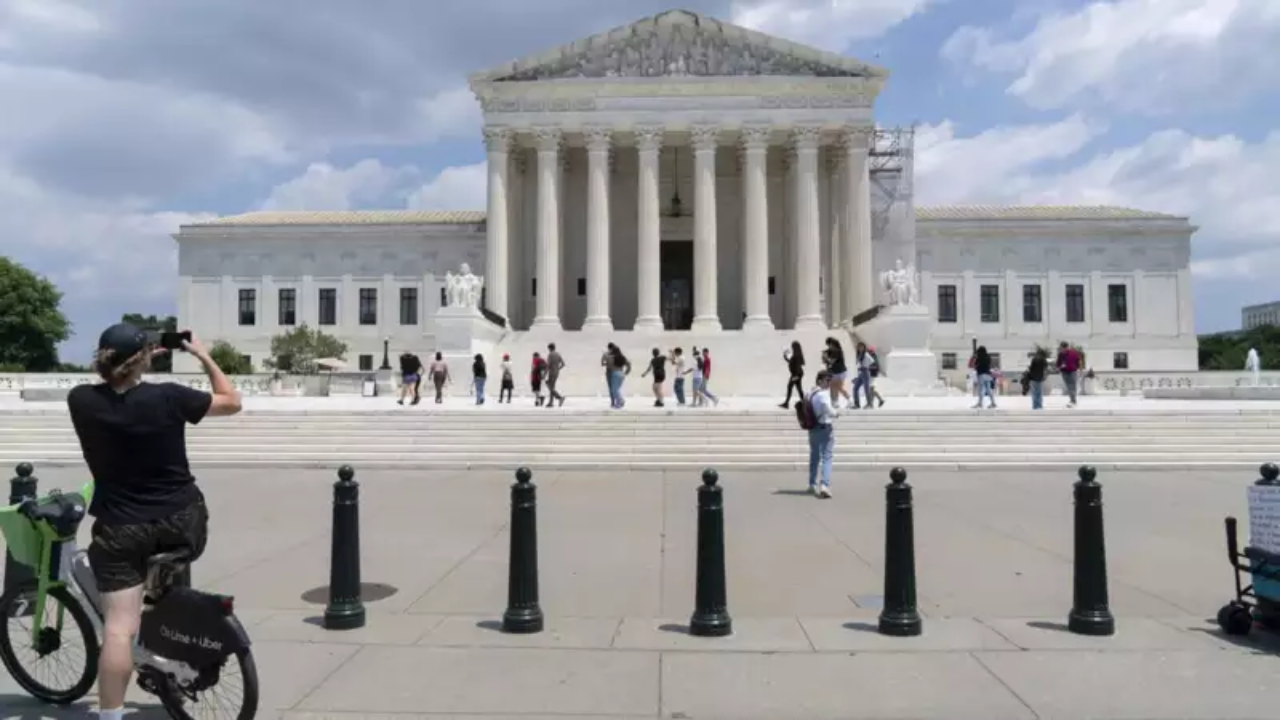NEW DELHI: The supreme court on Wednesday declined to lift the broad block on President Joe Biden’s student loan repayment plan, which aims to lower monthly payments and speed up the path to loan forgiveness. The decision comes after legal challenges from GOP-led states led lower courts to halt the plan earlier this summer.
Legal battle continues in lower courts
The Biden administration requested that the supreme court reinstate the plan, but the justices refused, with no dissents noted in the brief order.The court’s decision signals that it prefers the legal proceedings to unfold in the 8th US Circuit Court of Appeals, which was urged to “render its decision with appropriate dispatch” before the supreme court steps in.
Borrowers unaffected for now
The ruling does not have an immediate impact on the 8 million borrowers currently enrolled in the plan, known as SAVE (Saving on a Valuable Education), which was launched nearly a year ago. Due to the ongoing legal dispute, the department of education has placed these borrowers in an interest-free forbearance, pausing their monthly payments temporarily.
Uncertain future amid legal challenges
The SAVE plan, estimated to cost $276 billion by the Congressional Budget Office, faces an uncertain future as legal challenges continue. Despite the legal battle, the high court signaled its intent to allow the lower courts to handle the dispute.
Supreme court declines further requests
Last month, Alaska, South Carolina, and Texas asked the supreme court to uphold a partial block on the program as part of their broader legal challenge, but the justices denied this request as well.
Biden’s struggles with student loan forgiveness
Student loan forgiveness was a significant component of Biden’s 2020 campaign, aimed at garnering support from progressives. However, his administration has faced numerous obstacles, including a major ruling from the supreme court last year, which struck down a more expansive one-time forgiveness initiative, citing that Biden had exceeded his authority.
Key features of SAVE plan
The SAVE plan is one of the most prominent student loan initiatives from the Biden administration. Unlike the previously blocked broader forgiveness effort, SAVE is built on a different legal basis and provides more favorable terms for borrowers. It increases the income threshold before loan payments are required, lowers monthly payments to as little as 5% of discretionary income, and shortens repayment periods for borrowers with smaller loans, enabling faster loan forgiveness.
White House silent
The White House, department of justice, and department of education have yet to comment on the supreme court’s decision.
Legal battle continues in lower courts
The Biden administration requested that the supreme court reinstate the plan, but the justices refused, with no dissents noted in the brief order.The court’s decision signals that it prefers the legal proceedings to unfold in the 8th US Circuit Court of Appeals, which was urged to “render its decision with appropriate dispatch” before the supreme court steps in.
Borrowers unaffected for now
The ruling does not have an immediate impact on the 8 million borrowers currently enrolled in the plan, known as SAVE (Saving on a Valuable Education), which was launched nearly a year ago. Due to the ongoing legal dispute, the department of education has placed these borrowers in an interest-free forbearance, pausing their monthly payments temporarily.
Uncertain future amid legal challenges
The SAVE plan, estimated to cost $276 billion by the Congressional Budget Office, faces an uncertain future as legal challenges continue. Despite the legal battle, the high court signaled its intent to allow the lower courts to handle the dispute.
Supreme court declines further requests
Last month, Alaska, South Carolina, and Texas asked the supreme court to uphold a partial block on the program as part of their broader legal challenge, but the justices denied this request as well.
Biden’s struggles with student loan forgiveness
Student loan forgiveness was a significant component of Biden’s 2020 campaign, aimed at garnering support from progressives. However, his administration has faced numerous obstacles, including a major ruling from the supreme court last year, which struck down a more expansive one-time forgiveness initiative, citing that Biden had exceeded his authority.
Key features of SAVE plan
The SAVE plan is one of the most prominent student loan initiatives from the Biden administration. Unlike the previously blocked broader forgiveness effort, SAVE is built on a different legal basis and provides more favorable terms for borrowers. It increases the income threshold before loan payments are required, lowers monthly payments to as little as 5% of discretionary income, and shortens repayment periods for borrowers with smaller loans, enabling faster loan forgiveness.
White House silent
The White House, department of justice, and department of education have yet to comment on the supreme court’s decision.
Source : Times of India









